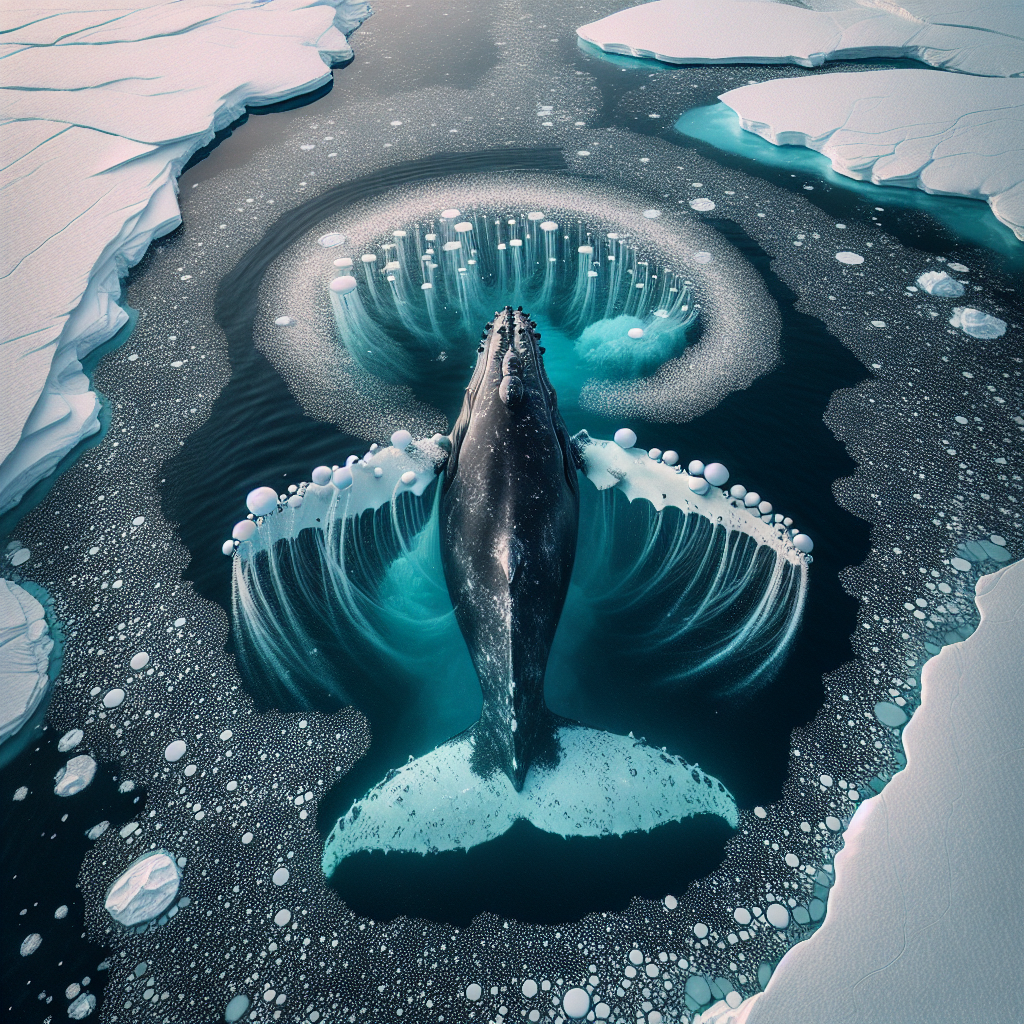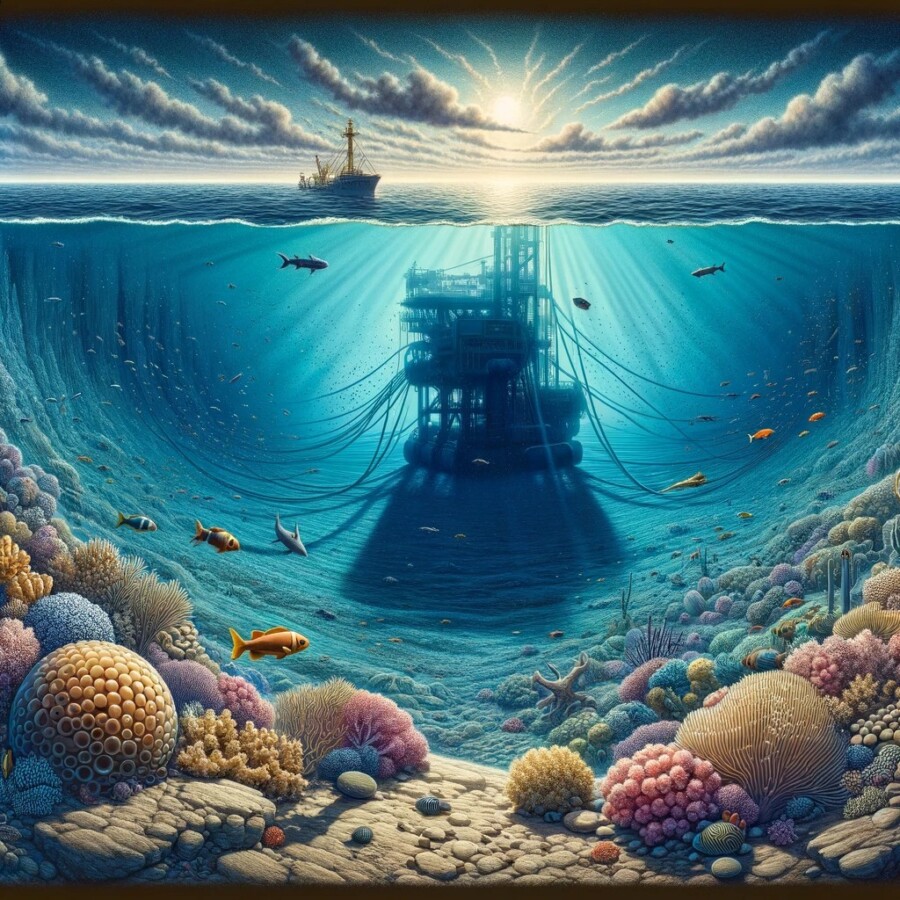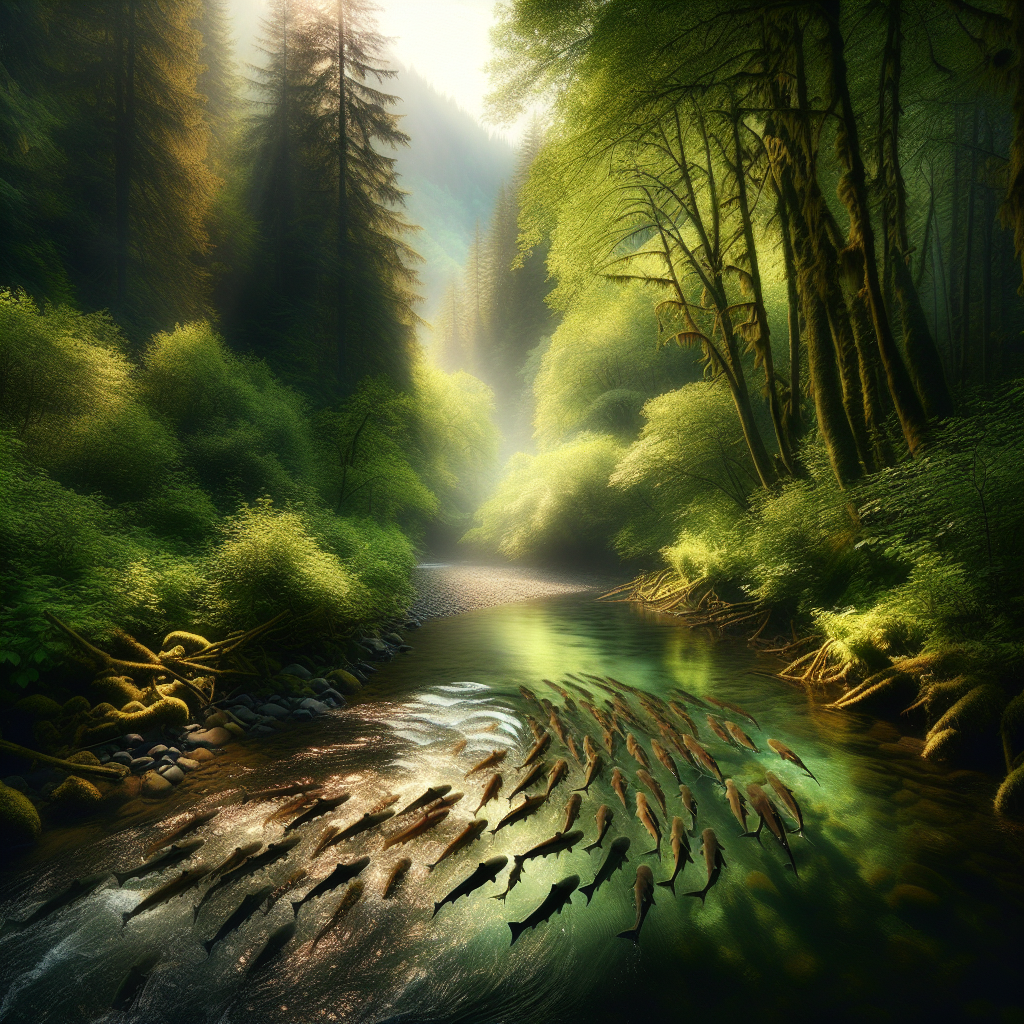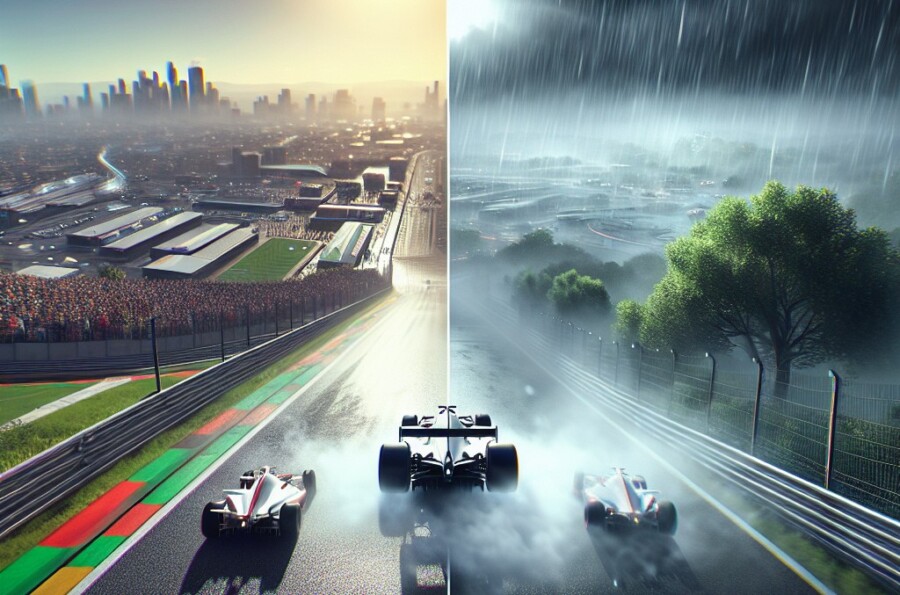Drones are helping scientists learn more about humpback whales in the Antarctic. The cool footage captured by BBC News and scientists shows how these whales use their bodies to make a “bubble net” to catch their food. They use their long fins to make a net of bubbles around their prey, which shows how smart and adaptable they are. Humpback whales are known for being good at tricks, and they’re the only ones who make these bubble nets. Using drones has made it way easier for scientists to study this behavior up close.
Drones have also helped scientists see that whale populations are growing again in places where they were almost wiped out. Scientists from the British Antarctic Survey used drones to study whales in South Georgia, an important place for the whaling industry in Antarctica. The footage they got was the first time anyone had seen a mom and baby southern right whale together off the coast of South Georgia. This means that these whale populations are slowly getting better. The scientists also filmed a mom and baby Antarctic blue whale, which are the biggest animals on Earth, eating in the same area.
Drones have also been used to measure how big whales are, and they found out that some whales are getting smaller because of climate change. A study in the journal Global Change Biology showed that gray whales off the Pacific Northwest coast have gotten about 13% smaller in the last 20 years. This could be a sign that their population is going down or that they’re not healthy. Size is really important for animals because it affects how they act, how their bodies work, and the whole ecosystem they’re a part of.
Besides helping scientists keep an eye on dangers to whales, drones have also caught some really cool things that whales do. Filming humpback whales working together to eat has shown scientists how these animals learn and cooperate. In Antarctica, they’ve seen lots of whales blowing bubbles at the same time, which means they’re still learning how to do it and haven’t figured out everyone’s job yet. The footage also shows humpbacks spinning, going around boats, and hanging out with other animals, which is like them playing. This helps them make friends and is super important for their well-being.
All in all, drones have totally changed the way scientists learn about whales. They’ve given us new info about how they eat, how their populations are growing, and how they’re dealing with climate change. Being able to see them from above with drones has let scientists watch and understand these amazing creatures in ways they couldn’t before.
Original news source: Drones reveal Antarctic whale ‘acrobatics’ (BBC)
🎧 Listen:
Slow
Normal
Fast
📖 Vocabulary:
| 1 | footage | Video or film that shows a particular event or activity |
| 2 | adaptable | Able to change or be changed in order to fit or work better in some situation or for some purpose |
| 3 | prey | An animal that is hunted and killed by another for food |
| 4 | population | The number of people or animals living in a particular area |
| 5 | whaling | The activity of hunting whales |
| 6 | coast | The land next to or near the sea |
| 7 | measure | To find out the size, amount, or degree of something |
| 8 | climate change | Long-term changes in temperature and weather patterns |
| 9 | ecosystem | A community of living things and their environment |
| 10 | cooperate | To work together with others to achieve a common goal |
| 11 | spinning | Turning around and around quickly |
| 12 | well-being | The state of being happy, healthy, or successful |
| 13 | creatures | Living beings, especially animals |
| 14 | survey | A detailed examination or inspection |
| 15 | behavior | The way in which someone or something acts |
Group or Classroom Activities
Warm-up Activities:
– News Summary
Instructions: Divide the class into small groups. Each group will read the article and then create a summary of the main points. They should focus on capturing the key information and presenting it in a concise manner. After a designated time period, each group will share their summary with the class.
– Opinion Poll
Instructions: Have the class discuss their opinions on the use of drones in studying whales. Divide the class into pairs or small groups and give them a few minutes to discuss their thoughts and reasons behind their opinions. Then, have each group share their opinions with the class and encourage a respectful and open discussion.
– Vocabulary Pictionary
Instructions: Select key vocabulary words from the article and write them on separate pieces of paper. Divide the class into two teams. Each team will take turns choosing a word and having one member of their team draw the word on the board or a piece of paper without using any letters or numbers. The rest of the team must guess the word within a designated time limit. The team with the most correct guesses wins.
– Sketch It
Instructions: Divide the class into pairs. One student will describe a scene or concept related to the article to their partner without using any specific vocabulary words. The other student must sketch what they think is being described. After a few rounds, have pairs switch roles. Then, have students share their sketches with the class and explain what was being described.
– Future Predictions
Instructions: In small groups, have students discuss and make predictions about the future use of drones in studying whales or other animals. Encourage them to think about potential advancements in technology and how it could impact scientific research. After a designated time period, have each group share their predictions with the class and discuss the feasibility and potential implications of their ideas.
🤔 Comprehension Questions:
1. How do humpback whales use their bodies to catch their food?
2. What is the purpose of the “bubble net” that humpback whales create?
3. Why are humpback whales considered to be smart and adaptable?
4. How have drones made it easier for scientists to study humpback whale behavior?
5. What have drones revealed about whale populations in South Georgia?
6. What was significant about the footage captured by drones off the coast of South Georgia?
7. What have scientists discovered about the size of gray whales off the Pacific Northwest coast?
8. How has the use of drones helped scientists understand how humpback whales learn and cooperate?
Go to answers ⇩
🎧✍️ Listen and Fill in the Gaps:
(1)______ are (2)______ scientists learn more about humpback whales in the Antarctic. The cool footage captured by BBC News and scientists shows how these whales use their (3)______ to make a “bubble net” to catch their food. They use their long fins to make a net of bubbles around their prey, which shows how smart and adaptable they are. Humpback whales are (4)______ for being good at tricks, and they’re the only ones who make these bubble nets. Using drones has made it way easier for scientists to study this behavior up close.
Drones have also helped scientists see that whale populations are growing again in places where they were almost wiped out. Scientists from the British Antarctic Survey used drones to study whales in South Georgia, an important place for the whaling (5)______ in Antarctica. The footage they got was the (6)______ time anyone had seen a mom and baby southern (7)______ whale together off the coast of South Georgia. This means that these whale populations are slowly getting better. The scientists also filmed a mom and baby Antarctic blue whale, which are the (8)______ animals on Earth, eating in the same area.
Drones have also been used to measure how big whales are, and they found out that some whales are getting smaller because of climate change. A study in the journal Global Change Biology showed that gray whales off the Pacific (9)______ coast have gotten about 13% smaller in the last 20 years. This could be a sign that their population is going down or that they’re not healthy. Size is really important for animals because it affects how they act, how their bodies work, and the (10)______ ecosystem they’re a part of.
Besides helping scientists keep an eye on dangers to whales, drones have also caught some really cool things that whales do. (11)______ humpback whales working together to eat has (12)______ scientists how these animals learn and cooperate. In Antarctica, they’ve seen lots of whales blowing bubbles at the same time, which means they’re still learning how to do it and haven’t figured out everyone’s job yet. The footage also shows humpbacks spinning, going around boats, and hanging out with other animals, which is like them (13)______. This helps them make (14)______ and is super important for their well-being.
All in all, (15)______ have totally changed the way scientists learn about whales. They’ve given us new info about how they eat, how their (16)______ are growing, and how they’re dealing with climate change. Being able to see them from above with drones has let scientists watch and understand these amazing creatures in ways they couldn’t before.
Go to answers ⇩
💬 Discussion Questions:
Students can ask a partner these questions, or discuss them as a group.
1. What is a drone and how is it used to study humpback whales?
2. How would you feel if you saw a humpback whale using its fins to create a bubble net?
3. Do you like the idea of using drones to study animals? Why or why not?
4. What do you think is the importance of studying whale populations in the Antarctic?
5. How would you feel if you saw a mom and baby whale together for the first time?
6. Do you think it’s a good thing that whale populations are growing again? Why or why not?
7. Why do you think it’s important to know if whales are getting smaller because of climate change?
8. What do you think is the significance of animals learning and cooperating together?
9. How would you feel if you saw humpback whales blowing bubbles at the same time?
10. Do you think it’s important for whales to make friends and have social interactions? Why or why not?
11. What do you think are the benefits of using drones to study and understand whales?
12. How would you feel if you were able to see whales from above using a drone?
13. Do you think it’s important to protect and conserve whale populations? Why or why not?
14. Why do you think it’s important for scientists to understand how whales eat and interact with their environment?
15. How do you think the use of drones has changed the way scientists learn about whales?
Individual Activities
📖💭 Vocabulary Meanings:
Match each word to its meaning.
Words:
1. footage
2. adaptable
3. prey
4. population
5. whaling
6. coast
7. measure
8. climate change
9. ecosystem
10. cooperate
11. spinning
12. well-being
13. creatures
14. survey
15. behavior
Meanings:
(A) A detailed examination or inspection
(B) The way in which someone or something acts
(C) Living beings, especially animals
(D) Able to change or be changed in order to fit or work better in some situation or for some purpose
(E) To find out the size, amount, or degree of something
(F) To work together with others to achieve a common goal
(G) The land next to or near the sea
(H) The state of being happy, healthy, or successful
(I) Turning around and around quickly
(J) The number of people or animals living in a particular area
(K) The activity of hunting whales
(L) Video or film that shows a particular event or activity
(M) Long-term changes in temperature and weather patterns
(N) An animal that is hunted and killed by another for food
(O) A community of living things and their environment
Go to answers ⇩
🔡 Multiple Choice Questions:
1. What are humpback whales known for?
(a) Being the biggest animals on Earth
(b) Making bubble nets
(c) Being good at tricks
(d) Eating in the same area
2. How have drones helped scientists study humpback whales?
(a) By capturing cool footage
(b) By measuring their size
(c) By studying their behavior up close
(d) All of the above
3. Where did scientists see a mom and baby southern right whale together for the first time?
(a) Antarctica
(b) Pacific Northwest coast
(c) South Georgia
(d) The British Antarctic Survey
4. What have drones shown scientists about whale populations?
(a) They are getting smaller because of climate change
(b) They are not healthy
(c) They are slowly disappearing
(d) They are growing again in some places
5. What have scientists learned about the size of gray whales off the Pacific Northwest coast?
(a) They have gotten about 13% smaller in the last 20 years
(b) They have gotten bigger because of climate change
(c) They have stayed the same size
(d) They have disappeared completely
6. Why is size important for animals?
(a) It affects the whole ecosystem they’re a part of
(b) It affects how they act and how their bodies work
(c) It affects their well-being
(d) All of the above
7. What have drones shown scientists about humpback whales in Antarctica?
(a) They are not good at tricks
(b) They are not adaptable
(c) They are not smart
(d) They are still learning how to blow bubbles at the same time
8. How have drones changed the way scientists learn about whales?
(a) By providing insights into their population growth
(b) By giving new information about their eating habits
(c) By helping understand how they are affected by climate change
(d) All of the above
Go to answers ⇩
🕵️ True or False Questions:
1. Humpback whales are not the only ones who make these bubble nets.
2. Drones have been used to measure the size of whales, revealing that some are getting smaller due to climate change.
3. The drones have captured footage of humpback whales using their bodies to create a “bubble net” to catch their food.
4. Drones have made it harder for scientists to study this behavior up close.
5. Drones have hindered scientists from observing decreasing whale populations in areas where they were previously almost wiped out.
6. Scientists are using drones to study humpback whales in the Antarctic.
7. Drones have also captured footage of humpback whales engaging in cooperative behaviors, such as blowing bubbles and playing with other animals.
8. The footage captured by drones did not show a mom and baby southern right whale together off the coast of South Georgia for the first time.
Go to answers ⇩
📝 Write a Summary:
Write a summary of this news article in two sentences.
Check your writing now with the best free AI for English writing!
Writing Questions:
Answer the following questions. Write as much as you can for each answer.
Check your answers with our free English writing assistant!
1. How do humpback whales use their bodies to catch their food?
2. How have drones helped scientists study whale populations in South Georgia?
3. What did scientists discover about the size of gray whales off the Pacific Northwest coast?
4. What have scientists learned about humpback whales by filming them with drones?
5. How have drones changed the way scientists learn about whales?
✅ Answers
🤔✅ Comprehension Question Answers:
1. How do humpback whales use their bodies to catch their food?
Humpback whales use their long fins to create a net of bubbles around their prey.
2. What is the purpose of the “bubble net” that humpback whales create?
The purpose of the “bubble net” is to trap and catch their food.
3. Why are humpback whales considered to be smart and adaptable?
Humpback whales are considered to be smart and adaptable because they are the only ones who use the bubble net technique to catch their food. This shows their intelligence and ability to adapt to different hunting methods.
4. How have drones made it easier for scientists to study humpback whale behavior?
Drones have made it easier for scientists to study humpback whale behavior by allowing them to observe and film the whales up close. This provides valuable footage that helps scientists understand their behavior and habits.
5. What have drones revealed about whale populations in South Georgia?
Drones have revealed that whale populations in South Georgia are growing again after being almost wiped out. This is a positive sign for the recovery of these whale populations.
6. What was significant about the footage captured by drones off the coast of South Georgia?
The footage captured by drones off the coast of South Georgia showed the first-ever sighting of a mother and baby southern right whale together. This is significant because it indicates that the whale populations are slowly recovering.
7. What have scientists discovered about the size of gray whales off the Pacific Northwest coast?
Scientists have discovered that gray whales off the Pacific Northwest coast have gotten about 13% smaller in the last 20 years. This could be a sign of a declining population or poor health among the whales.
8. How has the use of drones helped scientists understand how humpback whales learn and cooperate?
The use of drones has allowed scientists to film humpback whales working together to eat. This footage has shown scientists how these animals learn and cooperate, as well as their social interactions with other animals.
Go back to questions ⇧
🎧✍️✅ Listen and Fill in the Gaps Answers:
(1) Drones
(2) helping
(3) bodies
(4) known
(5) industry
(6) first
(7) right
(8) biggest
(9) Northwest
(10) whole
(11) Filming
(12) shown
(13) playing
(14) friends
(15) drones
(16) populations
Go back to questions ⇧
📖💭✅ Vocabulary Meanings Answers:
1. footage
Answer: (L) Video or film that shows a particular event or activity
2. adaptable
Answer: (D) Able to change or be changed in order to fit or work better in some situation or for some purpose
3. prey
Answer: (N) An animal that is hunted and killed by another for food
4. population
Answer: (J) The number of people or animals living in a particular area
5. whaling
Answer: (K) The activity of hunting whales
6. coast
Answer: (G) The land next to or near the sea
7. measure
Answer: (E) To find out the size, amount, or degree of something
8. climate change
Answer: (M) Long-term changes in temperature and weather patterns
9. ecosystem
Answer: (O) A community of living things and their environment
10. cooperate
Answer: (F) To work together with others to achieve a common goal
11. spinning
Answer: (I) Turning around and around quickly
12. well-being
Answer: (H) The state of being happy, healthy, or successful
13. creatures
Answer: (C) Living beings, especially animals
14. survey
Answer: (A) A detailed examination or inspection
15. behavior
Answer: (B) The way in which someone or something acts
Go back to questions ⇧
🔡✅ Multiple Choice Answers:
1. What are humpback whales known for?
Answer: (c) Being good at tricks
2. How have drones helped scientists study humpback whales?
Answer: (a) By capturing cool footage
3. Where did scientists see a mom and baby southern right whale together for the first time?
Answer: (c) South Georgia
4. What have drones shown scientists about whale populations?
Answer: (d) They are growing again in some places
5. What have scientists learned about the size of gray whales off the Pacific Northwest coast?
Answer: (a) They have gotten about 13% smaller in the last 20 years
6. Why is size important for animals?
Answer: (b) It affects how they act and how their bodies work
7. What have drones shown scientists about humpback whales in Antarctica?
Answer: (d) They are still learning how to blow bubbles at the same time
8. How have drones changed the way scientists learn about whales?
Answer: (b) By giving new information about their eating habits
Go back to questions ⇧
🕵️✅ True or False Answers:
1. Humpback whales are not the only ones who make these bubble nets. (Answer: False)
2. Drones have been used to measure the size of whales, revealing that some are getting smaller due to climate change. (Answer: True)
3. The drones have captured footage of humpback whales using their bodies to create a “bubble net” to catch their food. (Answer: True)
4. Drones have made it harder for scientists to study this behavior up close. (Answer: False)
5. Drones have hindered scientists from observing decreasing whale populations in areas where they were previously almost wiped out. (Answer: False)
6. Scientists are using drones to study humpback whales in the Antarctic. (Answer: True)
7. Drones have also captured footage of humpback whales engaging in cooperative behaviors, such as blowing bubbles and playing with other animals. (Answer: True)
8. The footage captured by drones did not show a mom and baby southern right whale together off the coast of South Georgia for the first time. (Answer: False)
Go back to questions ⇧













